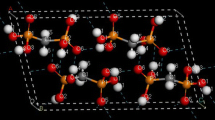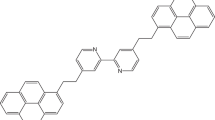Abstract
In the polyurethane industry, the undesirable dimerization and oligomerization of methylene diphenyl diisocyanate (MDI) are unwanted and problematic phenomena. The relative ratios of these dimers and oligomers have a strong temperature dependence, and they can be formed below and above the melting point of MDI (316.15 K). All possible structures of the isomers and their dimers were optimized, and then their thermodynamic functions were calculated at the M06-2X/6-31(d,p) level of theory. The dimerization of isocyanate groups can result in four-, five-, and six-membered rings. The four-membered ring is the most stable one due to the aromatic electrons in π orbitals of the uretidione ring. The relative stability of the dimers is therefore influenced by the steric effects and the relative positions of isocyanate groups. The most stable dimer is the one which is formed from the reaction of the p,o- and o,p-MDI isomers due to their intrinsic interactions, which were classified, and their impact on dimer stability was discussed.









Similar content being viewed by others
References
Bayer O (1947) Das Di-Isocyanat-polyadditionsverfahren (Polyurethane). Angew Chem 59:257–272. https://doi.org/10.1002/ange.19470590901
Sharmin E, Zafar F (2012) Polyurethane: an introduction. In: Polyurethane. p 3–16. https://doi.org/10.5772/51663
Sonnenschein MF (2014) Polyurethanes: science, technology, markets, and trends. Wiley. https://doi.org/10.1002/9781118901274
Global and China Polyurethane Industry Chain Report, 2014–2017, 2015. http://www.researchinchina.com/UpLoads/ArticleFreePartPath/20150109092558.pdf
Allport DC, Gillbert DS, Outterside SM (eds) (2003) MDI and TDI: safety, health and the environment: a source book and practical guide. Wiley, Hoboken
Schwarcz A, Brindell GD (1970) Preparation of diisocyanate dimers in aqueous medium, US3489744 A
Jones RO (2015) Density functional theory: its origins, rise to prominence, and future. Rev Mod Phys, Rev. https://doi.org/10.1103/revmodphys.87.897
Buckles RE, McGrew LA (1966) A kinetic study of the dimerization of phenyl isocyanate. J Am Chem Soc 88:3582–3586. https://doi.org/10.1021/ja00967a021
Shell T, Walford GL (1966) Process for the dimerisation of aromatic isocyanates, US3290288
Yoon WJ, Kim YS, Kim S, Choi KY (2004) Recent advances in polymer reaction engineering: modeling and control of polymer properties. Korean J Chem Eng 21:147–167. https://doi.org/10.1007/BF02705393
Ahangari MG, Fereidoon A, Ganji MD (2013) Density functional theory study of epoxy polymer chains adsorbing onto single-walled carbon nanotubes: electronic and mechanical properties. J Mol Model 19:3127–3134. https://doi.org/10.1007/s00894-013-1852-6
Shundalau MB, Chybirai PS, Komyak AI, Zazhogin AP, Ksenofontov MA, Umreiko DS (2011) Modeling of structures and calculation of IR vibrational spectra of N, N-dimethylformamide dimers by density functional theory. J Appl Spectrosc 78:326–336. https://doi.org/10.1007/s10812-011-9466-1
Dunning TH (1989) Gaussian basis sets for use in correlated molecular calculations. I. The atoms boron through neon and hydrogen. J Chem Phys 90:1007–1023. https://doi.org/10.1063/1.456153
Kendall RA, Dunning TH, Harrison RJ (1992) Electron affinities of the first-row atoms revisited. Systematic basis sets and wave functions. J Chem Phys 96:6796–6806. https://doi.org/10.1063/1.462569
Tirado-Rives J, Jorgensen WL (2008) Performance of B3LYP density functional methods for a large set of organic molecules. J Chem Theory Comput 4:297–306. https://doi.org/10.1021/ct700248k
Zhang C, Hu J, Chen S, Ji F (2010) Theoretical study of hydrogen bonding interactions on MDI-based polyurethane. J Mol Model 16:1391–1399. https://doi.org/10.1007/s00894-010-0645-4
Kim K, Jordan KD (1994) Comparison of density functional and mp2 calculations on the water monomer and dimer. J Phys Chem 98:10089–10094. https://doi.org/10.1021/j100091a024
Khan SUZ, Khosru QD (2015) Quantum mechanical electrostatics and transport simulation and performance evaluation of short channel Monolayer WSe2 Field effect transistor. ECS Trans 66(2015):245–254. https://doi.org/10.4208/cicc.2014.v2.n1.3
Xiao-xuan W (2014) Proton transfer in reaction between 2, 4-diisocyanatotoluene and amine compounds. Acta Phys-Chim Sinica 30:34–42. https://doi.org/10.3866/pku.whxb201311121
Zhao Y, Truhlar DG (2008) The M06 suite of density functionals for main group thermochemistry, thermochemical kinetics, noncovalent interactions, excited states, and transition elements: two new functionals and systematic testing of four M06-class functionals and 12 other fun. pp 215–241. https://doi.org/10.1007/s00214-007-0310-x
Ditchfield R, Hehre WJ, Pople JA (1971) Self-consistent molecular-orbital methods. IX. An extended gaussian-type basis for molecular-orbital studies of organic molecules. J Chem Phys 54:724–728. https://doi.org/10.1063/1.1674902
Kekišev O, Burk P, Järv J (2017) Computational modeling of strained alkenes: choosing the right computational model. J Quantum Chem, Int. https://doi.org/10.1002/qua.25439
Tataroğlu MM, Sungur FA (2017) A computational insight into cyclopropenone activated dehydration reaction of alcohols. J Mol Graph Model 77:106–114. https://doi.org/10.1016/j.jmgm.2017.08.009
Sayin K, Kurtoglu N, Kose M, Karakas D, Kurtoglu M (2016) Computational and experimental studies of 2-[(E)-hydrazinylidenemethyl]-6-methoxy-4-[(E)-phenyldiazenyl]phenol and its tautomers. J Mol Struct 1119:413–422. https://doi.org/10.1016/j.molstruc.2016.04.097
Becke AD (1993) Density-functional thermochemistry. III. The role of exact exchange. J Chem Phys 98:5648–5652. https://doi.org/10.1063/1.464913
Janoschek R, Rossi MJ (2002) Of free radicals from G3MP2B3 calculations. https://doi.org/10.1002/kin.10082
Tang TH, Deretey E, Jensen SJK, Csizmadia IG (2006) Hydrogen bonds: relation between lengths and electron densities at bond critical points. Eur Phys J D 37:217–222. https://doi.org/10.1140/epjd/e2005-00317-0
Wojtulewski S, Widerski G, Grabowski SJ (2009) Intramolecular hydrogen bonds in 2-iminoacetic acid and its derivatives—DFT calculations and “Atoms in Molecules” analysis. J Mol Struct Theochem 905:34–39. https://doi.org/10.1016/j.theochem.2009.03.005
Acknowledgements
The authors would like to thank Tamás Purzsa, Vice President of BorsodChem, for his helpful contributions. The authors acknowledge the opportunity provided by Wanhua-BorsodChem to conduct this study. This research was supported by the European Union and the Hungarian State, co-financed by the European Regional Development Fund in the framework of the GINOP-2.3.4-15-2016-00004 project, aimed to promote the cooperation between higher education and industry.
Author information
Authors and Affiliations
Corresponding author
Rights and permissions
About this article
Cite this article
Boros, R.Z., Rágyanszki, A., Csizmadia, I.G. et al. Industrial application of molecular computations on the dimerization of methylene diphenyl diisocyanate. Reac Kinet Mech Cat 124, 1–14 (2018). https://doi.org/10.1007/s11144-018-1385-1
Received:
Accepted:
Published:
Issue Date:
DOI: https://doi.org/10.1007/s11144-018-1385-1




